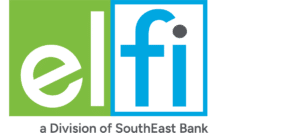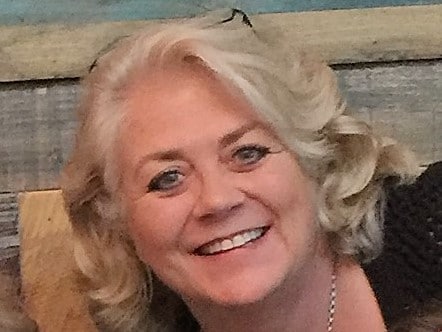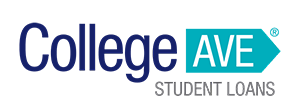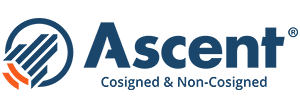Paying off $70,000 of student loan debt in just one year sounds too good to be true.
But according to a report on CNBC, one nurse practitioner did just that. Schauren Hinson took charge of her student loans and was able to pay off a significant portion of debt from her graduate nursing program at Duke University in just one year.
What She Was Up Against
Becoming a nurse practitioner requires a graduate degree and commands a starting salary of at least $80,000.
Hinson’s savings were able to cover her first year’s tuition, but she still graduated with student loans totaling $140,000. With high interest rates on her loans (as much as 8.5%), her monthly payments were around $1,800 and practically unmanageable on her salary.
To afford her monthly payments, Hinson signed up for an income-driven repayment (IDR) plan on her federal loans, which reduced her payment and lengthened her repayment term. Soon she found that her payments weren’t covering the interest and her balance was continuing to grow. She determined that it would take 20 to 25 years to eliminate the debt once and for all under her IDR plan.
How She Changed the Course of Events
Not content settling for that, Hinson educated herself about refinancing and consolidated her eight loans into one refinanced loan at 3.0%. The new rate reduced her monthly payment and ignited a sense of urgency to repay her student loan debt quickly.
Working three jobs — nurse practitioner, home health, and clinic weekend work — allowed Hinson to make an extra $4K per month. The extra money (along with a few additional efforts) allowed her to pay $70,000 in the first year.
Her advice? “Don’t spend a dime on anything other than basics and put everything else toward your debt so it’s out of your life,” said Hinson.

Introducing
The Aunt Betty Fund
Family and Friends can easily send payments to reduce the burden of debt — directly to the loan servicer.
Donors can support grant programs helping borrowers who are struggling with their payments
Grants offer those with demonstrated financial need an opportunity to get help with their loans.
How to Pay Off Nursing School Loans Fast
Today, the average student loan debt for graduate-level nurses is around $50,000, with those attending premier schools clocking in at over $100,000. Rather than simply paying the minimum payment for the next ten years, we’re going to look at some strategies and considerations for nurses who are paying off their student loan debt
The 2 Best Companies to Refinance Student Loans
Our Top-Rated Picks for 2024 Offer Low Rates and No Fees

Nursing Repayment/Forgiveness Programs
There are tons of opportunities for student loan forgiveness for nurses, and that’s largely due to the continuing shortage of nurses graduating today. Two years into the COVID-19 pandemic and the impact of nurse shortages in the U.S. is painfully clear, and both federal and state agencies are trying to find ways to recruit potential candidates through student loan support.
These options often require relocation or a job change, which is a major consideration, and most of these options include working with underserved populations. Here are some of the opportunities for nurse repayment and forgiveness programs:
- Public Service Loan Forgiveness (PSLF) — This program offers federal loan forgiveness to nurses who work full-time for a designated government or non-profit group while making 120 monthly payments (10 years). At that point, the government will forgive the remaining federal student loan balance.
- Nurse Corps Loan Repayment — Forgives up to 85% of loans (including interest) for RNs, APRNs, and nursing faculty who have worked for up to three years in a Critical Shortage Facility or at an accredited nursing school.
- National Health Service Corps – Indian Health Service (IHS) — Nurse practitioners and midwives who work at an IHS facility or tribally-operated health clinic for at least two years are eligible to receive up to $40,000 per year.
- Army Nurse Corps Loan Repayment Program — Active duty and Army Reserve personnel can receive up to $250,000 in student loan forgiveness for nurses, plus signing bonuses (up to $30K), salaries, and housing allowances. The Army also has a scholarship program for nurses.
- NHSC Substance Use Disorder Workforce — Up to $75,000 available for nurse practitioners or mental health nurse specialists who work with Medicare, Medicaid, and CHPS members for up to three years.
- All 50 States have some type of Nursing Student Loan Forgiveness Program. See the Nursing Journal summary here for more information.
When considering any student loan forgiveness program, be sure to understand the tax consequences since many forgiveness amounts are taxed as regular income.
Healthcare Systems Offering Student Loan Support
Like many employers, hospitals and healthcare systems are recognizing the benefit of offering student loan forgiveness for nurses as a great recruitment tool. While not as generous as some of the federal and state programs, you would have a greater say in where you live and the type of nursing you could practice.
As with federal and state forgiveness programs, be sure to research the tax consequences for this type of benefit.
How to Pay Off Nursing School Loans Using Other Tactics
Take Advantage of High Paying Temporary Jobs
If you have time available, consider working temporary jobs. Healthcare systems, clinics, home health agencies, and long-term care facilities are always looking for nurses to cover short staff situations, including vacations, family leaves, and hiring shortages.
There is top dollar to be made and you might even find a better opportunity.
Use Extra Cash to Pay Down Principal
Call it a windfall, call it luck, or call it unexpected, but if you find yourself with extra cash, use it to pay down the principal of your student loan.
Tax refunds, sign-on bonuses, holiday bonuses, lottery winnings, inheritances — wherever it comes from, send it to your lender with instructions that it should be applied to your loan principal.
Student Loan Refinancing
As Hinson found, refinancing can make the most sense for people with large balances on their student loans. Student loans taken out in recent years, both federal and private, can have high interest rates and expensive monthly payments.
Through refinancing, you can take all of your student loans and refinance them into a single package with one lender offering a lower interest rate and flexible terms. There are no application or origination fees when refinancing student loans, so it won’t cost you anything.
While today’s interest rates are under pressure from policy changes being made by the Federal Reserve, interest rates are still relatively low for people with excellent credit and strong income.
Consider this example:
Using Hinson’s figures, if you had loans totaling $140,000 at 8.5% for 10 years, your monthly payment would be about $1,736 and you would pay total interest of over $68K.
If you refinanced that same $140,000 at 3.0% for 10 years, your monthly payment would be $1,351.85 and you would pay about $22K in interest over the life of the loan.
Try Purefy’s Student Loan Payoff Calculator below to see how much money you could save by refinancing your nursing school loans.
See How Much You Can Save
Student Loan Payoff Calculator
View Details
Collapse
Check how long it will take you to pay off your student loans. Quickly see the effects of lower rates, extra payments, and different terms on your repayment plan.
Results
| Current Payment | w/ extra payment | Difference | |
|---|---|---|---|
| Term | 10 years | — | — |
| Payoff Date | — | — | |
| Total Interest | $16,560 | — | — |
Want to lower your rate to help pay off student loans faster? Check your rate at our top-rated lenders in 2 minutes, with no impact on credit.
Comparing Refinancing Options
If refinancing is an option that works for you, then you will want to compare interest rates and loan terms from a variety of lenders to make sure you get the best deal.
However, there’s no need to visit numerous websites and fill out tons of quote requests. You can accomplish a thorough and comprehensive review using a marketplace quote engine like Purefy’s rate comparison tool.
First, start by completing the required information:
- Personal demographics like name, address, social security number (don’t worry, your information is handled securely with industry-leading encryption)
- Income
- Current student loan information
- Your nursing degree and the school you graduated from
After a soft credit pull (which does not affect your credit), you’ll receive real offers from multiple lenders. Purefy’s lenders meet or exceed rigorous standards and are some of the best in the industry.
From there, you can evaluate each offer and make your selection. Applying is fast and easy, and after providing a few supporting documents, you’ll be able to finalize the loan. After signing loan documents, your existing loans are paid off and a new loan is created with one payment and due date each month. Some of Purefy’s lenders also offer autopay discounts, so you could shave another 0.25% off of your interest rate by setting up automatic payments.
Final thoughts
If you are a nurse practitioner or nursing professional with student loan debt, Hinson’s experience can be inspiration to tackle your pile of nursing school loans. Your options can include student loan forgiveness for nurses, refinancing, or a combination of things we’ve suggested.
Try Purefy’s rate comparison tool to see if you can save money by refinancing your student loans. Stop paying more than you should for your education.
Interested in Student Loan Refinancing? Compare rates from top-rated lenders and see how much you could save.
Checking your rates takes 2 minutes and has no impact on credit.



















